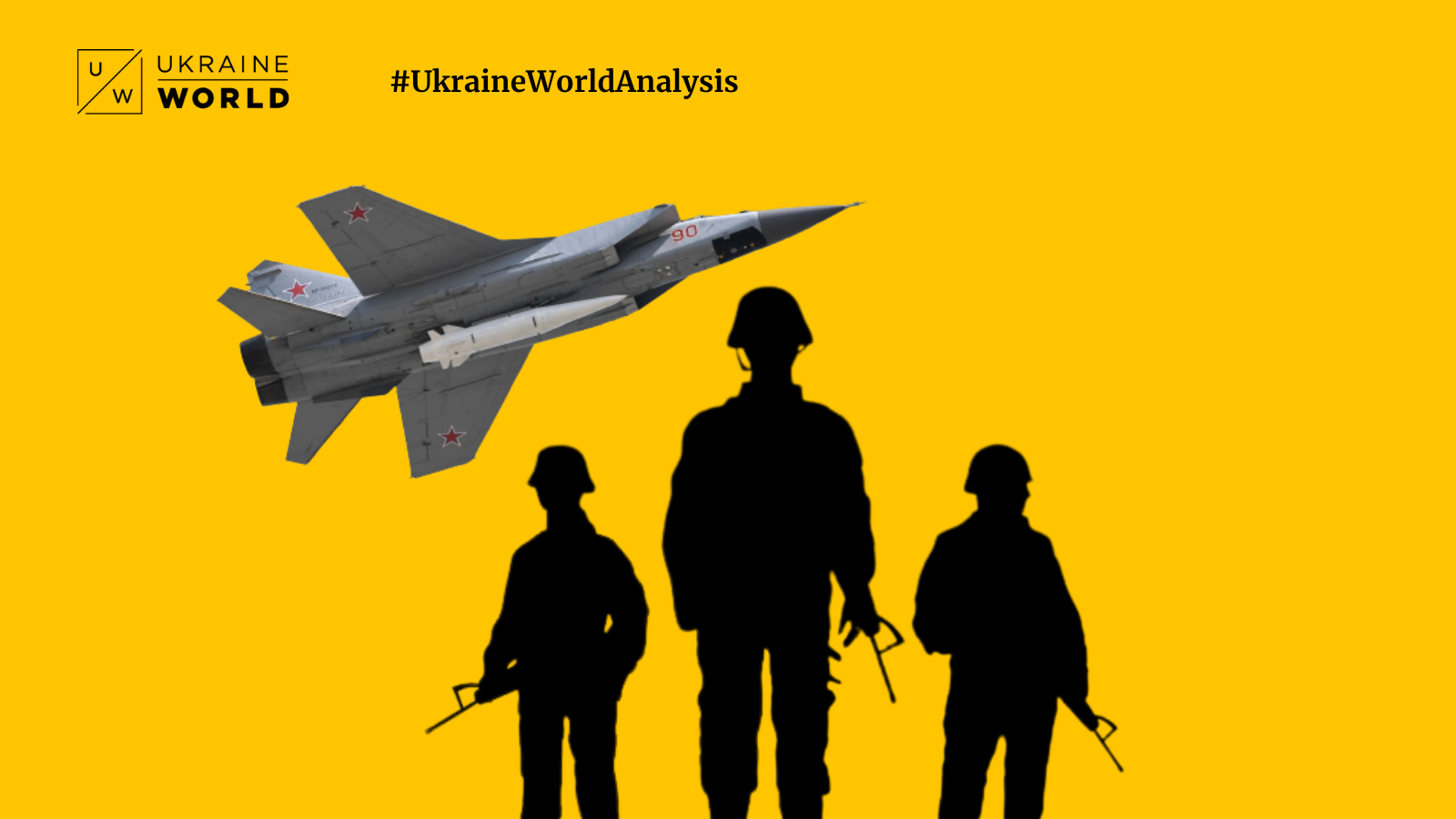UkraineWorld spoke to Petro Chernyk, military expert. Key points – in our brief, #UkraineWorldAnalysis:
1. On the possibility of an attack from the north
- In terms of missile launches, Belarus has already been waging war against Ukraine. Systems including the 9K720 "Iskander-M", along with the 9M723 and 9M728 variants, deliver heavy missile strikes on Ukraine, primarily in its western regions.
- Currently, there is a prepared 13,000 volunteer corps equivalent to one mechanized division or four mechanized brigades. Therefore, an offensive from the north is possible, but predicting whether it will happen is a matter of reading tea leaves.
2. On the technical capabilities of Ukraine and Russia
- As of now, Russia has used its entire range of weapons, excluding its arsenal of weapons of mass destruction. Among the missile systems Russia has used are high-quality missiles such as the Kh-47M2 Dagger (or Kinzhal), the Kh-101, the Kalibr, and the Iskander, which are reaching a critical point. In recent weeks, the Russian Federation has used the S-300 anti-aircraft missile system with its main 80-180 kg warhead lined with metal cubes as shrapnel to destroy everything in the detonation radius. Russia has up to 1,500 such missiles.
- On February 24th, Russia had around 8,000 missiles of different types. There has been an unprecedented missile terror inflicted on Ukraine, with more than 3,000 missiles launched at its. The closest historical example is the US war against the regime of Saddam Hussein in 2003, with 802 precision-guided munitions and 109 Tomahawk missiles fired at military targets with exceptional accuracy.
In contrast, in Russia`s bombardment, about one of every four missile strikes hitting civilian infrastructure objects.
- In addition to strategic missiles, Russia has used medium-range missiles, especially the dangerous Kh-31, which has a range of up to 160 km with a 110 kg warhead, and the Kh-59, which can fire up to 290 km with a 300 kg warhead.
- The second means of Russian bombardment against Ukraine is aviation. Ukraine has had unprecedented success in shooting down modern aircraft and dispelled the myth that Russia has strong 4th generation combat aviation. In fact, Russia has relied instead on refitted old Su-27 and MiG-29 aircraft. We have destroyed more than 200 out of Russia's 1,370 warplanes.
- The most terrible Russian weapon is artillery. The Russian Federation has the largest barrel artillery stock in the world. Out of 4,500 units, 1,000 have already been destroyed. Russia also has a practically unlimited supply of shells, as Russia is replete with the raw materials to make shells and has the factories to make them. We should not underestimate the enemy and believe it is exhausted.
- However, this is an existential war of Moscow imperialism which is on its way to collapse. This collapse may take place suddenly, as was the case, say, with the regime of Nicolae Ceausescu în 1989. But as Churchill said, "The main Constitution of Great Britain is its common sense," and we really need common sense. We cannot hope for God's providence. World elites have chosen a course to lower Russia's geopolitical might, but not to collapse it.
- Ukraine has shown miraculous tactical skills and courage, and we should be grateful to our allies for their enormous military and technical support. The amount of 13 billion dollars of American aid pledges for Ukraine over a six months period is a gigantic amount, and there has never been any such effort with such strength and speed in world history.
3. On a probable scenario of the deployment of military operations
- As Machiavelli once said: "Wars begin when you will, but they do not end when you please". A civilized Ukrainian democracy does not fit in with imperialist wreckage. Moscow's main aim in this war is to liquidate Ukrainian statehood.
- Due to such fundamentally opposite interests of the belligerents, this conflict could last a long time - as rains come, heavy equipment (artillery system up to 30 tons, armored personnel carriers up to 12 tons) will not be able to move on open ground, so artillery lines will be set up. We must remember that territory is considered either occupied or liberated when one side's infantryman sets foot there. There are going to be heavy artillery battles, which explains why the Americans have provided a huge number of counter-battery installations of different five classes. Then, the dry steppe comes again.
- The concept of a new iron curtain descending over Russia causing the smoldering conflict is also quite working. North Korea has been living in almost complete isolation since 1953. The philosophy of autarky (complete closure) is quite acceptable for Russia. Since Ivan the Terrible, there has been no tradition in Russia of democratic power transfer - Russia gets new leaders because the old ones die of old age, are killed or are removed.
Petro Chernyk elaborated four developments to ensure a secure and prosperous future for Ukraine:
I. Russia breaks up into 15-20 countries.
II. The nuclear "stinger" is ripped out.
III. Units formed on the territory of the so-called "Russian Republic" are cut off from oil and gas resources.
IV. Ukraine joins NATO.
4. On historical immutability of Russia's militarism
- Russia's war strategy has not changed in any way over the years - horrific bombardments of missiles and artillery, along with the inhumane treatment of their own soldiers, are unchanging parts of Russia's military tradition.
- For now, Russia is a consolidated schizoid fascism multiplied by Orthodox fundamentalism. Putin is only a reflection of his nation. Every second is Putin, every third - Stalin, every fourth - Zhukov, and every fifth - Nicholas II. Several generations must undergo a long rehabilitation process.
This material was prepared with financial support from the International Renaissance Foundation.
DARIA SYNHAIEVSKA, ANALYST AND JOURNALIST AT UKRAINEWORLD
Petro Chernyk, Military expert

